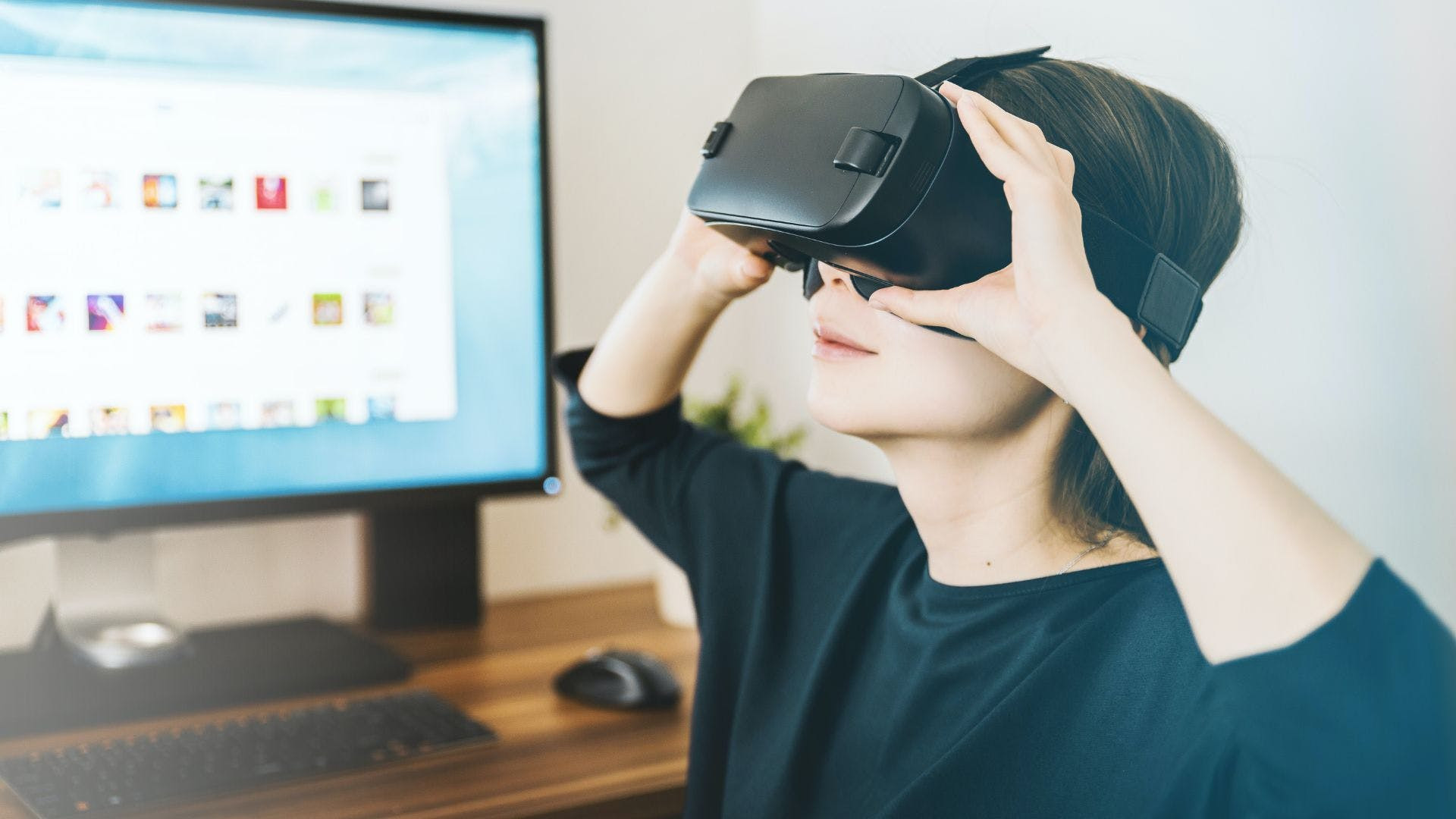How urgent is it to address social avoidance?
Winnie Mak (WM): Social avoidance is a common manifestation of many mental disorders, such as depression and anxiety—an estimated 25% of people will experience anxiety and depression at some point in their lives. However, avoiding other people can worsen depression, loneliness, and low self-esteem, leading to further withdrawal from social situations and creating a vicious cycle.
Yi Mien Koh (YMK): Waiting times to see a psychologist in the Hong Kong public health system are long, and private consultations are expensive. As a leading health insurer, AXA wanted to find affordable access to mental health support. The project name “Yes I Can” reflects the idea of self-efficacy and confidence that one can do it. As well as destigmatizing mental health issues, we wanted to explore how VR could help people feel safer and more confident in social situations.
How has technology already been successfully used in mental health promotion?
WM: Our trials with the WiseLiving, Living With Heart, and TourHeart online interventions have demonstrated that mindfulness-based and cognitive behavioral interventions can be successfully delivered online to reduce depression and anxiety symptoms and elevate well-being. And, VR has already been used to treat phobias and post-traumatic stress disorder.
Amy Chan (AC): While VR technology has become more realistic and sophisticated over the past 10-20 years, it hasn’t been fully leveraged to address depression, generalized anxiety, or social avoidance, so our work is pioneering in that sense.
What were the major results of your randomized control trial?
WM: Over the three VR sessions, we saw a significant reduction in social avoidance, and this effect was sustained at the 1-month follow-up. After the intervention, people had less social avoidance, social anxiety, depression, and fear of negative evaluation.
AC: The self-guided VR program includes five scenarios to choose from: a convenience store, a café, a bus, a street, and a medical clinic. A “virtual coach” guides participants through a series of graded tasks, such as placing an order at a café or making eye contact. There are five levels of difficulty, with increasingly noisier scenes, more people, and more challenging tasks.
Why does AXA Hong Kong find VR such an attractive tool with which to address mental health issues?
YMK: Mental health conditions such as anxiety and depression are common in the general population, so simple and affordable digital tools are needed. Five years ago, very few people were looking at VR. After learning that the NHS was offering VR treatments developed by Professor Daniel Freedman of Oxford University, I thought it would be great to transport that into Asia.
What was the impact of the COVID-19 pandemic on your protocol studies?
AC: The multiple suspensions and interruptions greatly impacted recruiting and retaining participants. Also, many participants told us that they felt less urgency to treat their social avoidance symptoms during the pandemic, as online meetings and social distancing meant they didn’t need to interact with people in person. At the same time, they told us that the absence of in-person contact limited the opportunities to practice skills they had acquired during the VR program.
While VR technology has become more realistic and sophisticated over the past 10-20 years, it hasn’t been fully leveraged to address depression, generalized anxiety, or social avoidance, so our work is pioneering in that sense.
What was the role of Oxford VR in designing the VR device?
YMK: I visited Prof. Freedman’s lab in Oxford and was inspired by his results in people with phobias. We decided to bring Oxford VR’s commercialized technology to Hong Kong and localize it so that it was culturally relevant.
WM: Hong Kong is one of the most crowded areas in the world, and even people with social avoidance are used to large crowds. So, in addition to changing the language to Cantonese, we needed the scenes to be more intense to fit with the local culture.
AC: For this, there were some technical constraints, such as the VR hardware’s computing power. We worked with Oxford VR to overcome these constraints by increasing the background noise and adding more background objects to increase the feeling of busyness without draining computing power. Oxford VR also made the characters more Asian-looking and took references from Hong Kong social settings, such as mask-wearing, to create a more realistic virtual environment.
How important is collaboration in interdisciplinary work?
WM: Our team includes psychologists, engineers, researchers, journalists, people in marketing, and people with a business background. We need different perspectives to help us be more creative in our thinking. Even Yi Mien and I, while we share the vision of tackling stigma and promoting mental health, I come from an academic and psychological perspective, and she has a medical and business perspective. I appreciate the collaboration with academics and corporations like AXA because I think it’s important to have public and private partnerships to make things work.
Strict lockdowns were imposed on millions of people worldwide during the COVID-19 pandemic. How do long periods of isolation affect mental health, and how might VR interventions be useful?
WM: The lockdowns may have exacerbated psychological distress, and economic, employment, and political uncertainties may have worsened anxiety, especially for deprived and disadvantaged people. While they cannot “solve” sociopolitical issues, telehealth, VR technology, and online interventions could complement what wasn’t possible during the pandemic, such as face-to-face treatment.
YMK: The average waiting time to see a psychologist in Hong Kong public health services is 18 months, and that’s after waiting for a consultation with a psychiatrist. Winnie and I wanted to work towards inexpensive, accessible, and sustainable services that could transform treatment.
How soon can we expect to see immersive VR therapy in public healthcare programs?
AC: Users told us that this kind of therapy would be effective because it was personalized, on-demand, and fit their needs and schedules. With progress in technology and as the device becomes more comfortable and affordable, there’s potential for widening the public’s access to evidence-based treatment.
YMK: We’ve shown that VR intervention is clinically effective and can be used anywhere—even at home. The next step is to form an integrated care program with healthcare providers. Healthcare professionals may not know what VR can do, and most doctors adopt a traditional approach to mental health. The biggest challenge will be to educate them on how VR complements what has always been traditionally available. Due to our payor role, insurers can play a pivotal role in bringing ecosystem players together.
WM: A hybrid model of online and offline interventions could be integrated into the mental health services system. For that, we need more advocacy with the government, funders, and healthcare providers. Some people wait years to receive treatment, so why not provide them with evidence-based digital tools with which they can help themselves in the meantime?
August 2022



